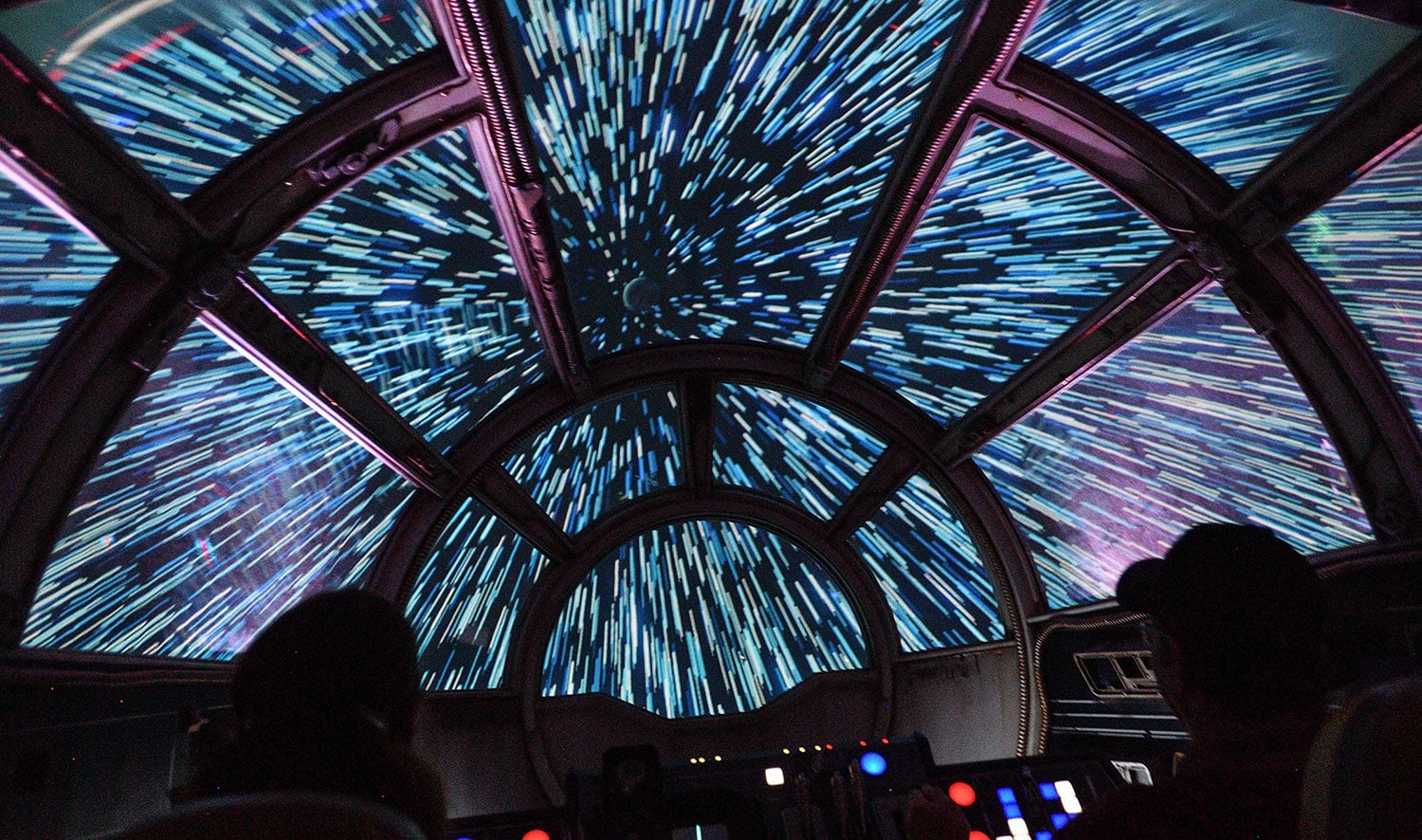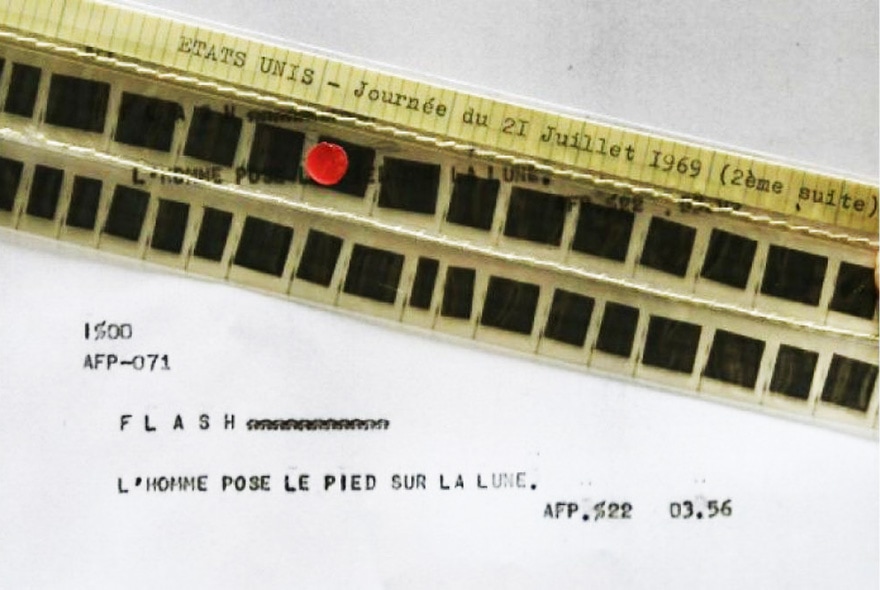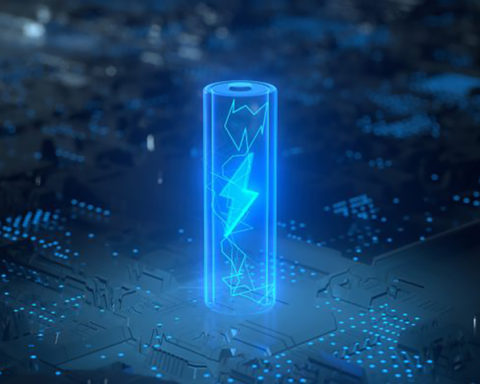Almost every day, astronomers announce the discovery of a particular exoplanet. Each time, one wonders if it is habitable, resembles the Earth or not, could host human colonies. Many people start dreaming, but there's always a catch. The closest of these exoplanets is several million kilometres away, and at the speed at which today's spaceships travel, it would take several astronauts' lives to reach these distant promised lands. On the other hand, if a rocket capable of propelling itself at the speed of light were invented, everything would change. This crazy dream of mankind may be on the way to becoming a reality thanks to a brilliant or completely perched inventor from NASA who has just presented his "Helical Engine", capable of flying at 99 % of the speed of light, i.e. almost 300 000 km per second. The trip to Mars would take 12 minutes and the one to Neptune barely four hours...

Dr. David Burns is a NASA engineer at the Marshall Space Flight Center in Alabama. He looks nothing like the mad scientist from Back to the Future. On the contrary, he looks completely clean, his hair is not shaggy but perfectly wise, he wears an elegant suit and tie and seems out of the mould of the best American schools. This engineer, in his spare time, likes to tease equations. What do you want, we're having the time of our lives. He loves physics and knows all of Einstein's theories perfectly well. It was in his spare time that he invented something that could make him the most famous man in the world, a man whose statue NASA would erect on each of his star-shooting steps.
Helical Engine
His invention has a name: Helical Engine which could be translated as "Helical engine". A completely revolutionary motor which, according to its inventor, would allow to propel itself at 99 % of the speed of light. A invention proposed to NASA, and made public on October 11th on the website of the American Space Agency.
An invention that immediately created a buzz. Indeed, if Dr. Burns' engine works as he predicts, it's the door wide open to all space travel. For today, even our most modern spaceships, even those of the genius Elon Musk, are lagging behind miserably. It takes them years, even centuries, to reach even the smallest exoplanet. This makes it impossible to plan any human conquest of deep space for some time to come. But if we could travel at 1 billion km/h, i.e. about the speed of light, the sidereal world is within reach. Imagine that Mars is getting closer to the Earth in 12 minutes of flight. That changes everything.
So Dr. Burnes' invention excites curiosity. What is this helical engine? Let's see if we can figure out what it's all about.
There is a fundamental principle to any movement in space: to every action there is a reaction. If you ignite an engine by burning fuel (propellant), your spacecraft will undergo a thrust, amplified in the vacuum of space. This is how we have been moving since rockets have been around.
Change your mind
David Burns has another idea. He wants to do without propellant and go beyond the principle of action-reaction. He doesn't need it in his concept. He has read the theory of relativity and especially the theory of special relativity which says that objects gain mass as they approach the speed of light. Take a one-kilogram block of stone and propel it at the speed of 380,000 km/s, and it will weigh several tons.
Put this block in a box by aligning it with a rod and provide it with springs at the front and back. Push the block to bounce it back and forth. If a spring inside the box pushes the block, the block will slide along the rod in one direction while the box moves back in the other direction. When the block reaches the end of the box, it bounces backwards and the direction of the box recoil changes as well. This is an action-reaction - also known as Newton's Third Law of Motion - and under normal circumstances it limits the gearbox to reciprocating motion. The box moves but does not move forward. It will stand still.
But, Burns wonders, if the mass of the block was much greater when it slides in one direction than the other? That would then give the box a stronger thrust at one end than at the other. The action would overtake the reaction and the box would accelerate forward.
This mass change is not forbidden by physics. According to Einstein's theory of special relativity, objects gain mass as they approach the speed of light. Therefore, it is "enough" to increase the mass on one side to make the whole thing move forward. And the faster the speed increases, the faster the whole system moves.
Burns isn't going to use boulders to power his rockets. He's going to replace them with ions, atoms that carry a charge of electrons. His principle is inspired by the particle accelerators used by major scientific organizations for their experiments in fundamental physics.
Dr. Burns wants to place ions in a loop and make them move faster at one end of the loop and slower at the other. The inventor will even improve on his idea by replacing the closed loop with a helical shape, like that of a tensioned spring.
" The motor accelerates the ions confined in a loop at moderate relativistic speeds, then varies their speed to make slight changes in their mass. The engine then moves the ions back and forth along the direction of travel to produce thrust. "he writes in the abstract of his work.

He points out that his engine has no moving parts, except for ions moving in a vacuum line, trapped by electro-magnetic fields. He adds that his system does not use any propellant gas.
Inevitable controversies
On paper, Burns' invention looks great. But getting to the real thing is another matter. Indeed, according to the magazine New ScientistFor the system to work, the spiral chamber would have to be large enough: 200 metres long and 12 metres in diameter. Also, the energy it would take to exert thrust would have to be phenomenal. It would take 165 megawatts of energy to produce 1 newton of thrust. That's the equivalent of a power plant to produce the force needed to accelerate one kilogram of mass per second squared. That's a lot of energy for not much. But, says Dr. Burns, in space, in the vacuum of space, it's something else. That energy would be more than enough to accelerate the speed, which would increase the mass of the ions to 99 % of the speed of light. Moreover, he says, it is possible to recover much of the energy that the accelerator loses in heat and radiation.
The other difficulty David Bruns has to overcome is that of a fundamental law of physics, that of momentum conservation, which seems to be impassable. All the inventions that have worked on a concept of an inertial motor such as the EM Drive have hit this wall. Martin Tajmar of Dresden University of Technology in Germany, who has been testing the EM Drive, thinks the helical engine will probably suffer the same problem. « All inertial propulsion systems, to my knowledge, have never operated in a frictionless environment. This machine uses Limited Relativity, unlike the others, which complicates the picture.", he says...but... unfortunately there's always action-reaction. ». David Burns is aware of this difficulty but believes there are ways to get around this law by maintaining momentum through the acceleration of ion rotation.
Dr. Burns is fully aware that his idea is worthy of debate, controversy, and enrichment. But he says it's worth a try. He hasn't yet invented the engine of Han Solo's spaceship in Star Wars; he's only invented a concept that could, according to the title of the New Scientist " Violate the laws of physics ». He knows he still has a long way to go, but he takes the risk of any radical innovation: " You must be prepared to embarrass yourself. It's hard to invent something new and really work... ".













You should revise your calculations, 1million km/h is not at all close to the speed of light which is 300 000km/s....
Exact
Peut être que il faudrait essayé de reproduire déjà dans un futur proche le mode déplacement des neutrons quand il y a une explosion nucléaire puisque nous en connaissons le principe.
It's about a billion miles per hour they meant it.
You're right! It "s a typo that we just corrected. With our thanks for pointing it out to us! Yours sincerely.
UP' Magazine Editorial Team
Small vocabulary note:
It is not special relativity, it does not exist, but special relativity. To be distinguished from general relativity.
The RR applies to moving objects (at all scales), it is in this one that we find the famous E=mc².
As for the RG, it describes the distortion of space-time.
That's a load of crap. What happened to conserving momentum? Anyway, I think (and hope) that we won't hear any more about him.
To see" they all thought it was impossible, a fool passing by, not knowing it was impossible, did it. "All major discoveries at first seemed impossible...and yet. Let's keep the humility of leaving the field of the possible open and face the limits of our knowledge, however great it may be. The most enlightened person is not immune from error. And sometimes the beginner teaches the master.
In other words, assholes are daring, that's how you can recognize them... on the whole I agree...
La preuve , vous avez osé répondre …. (Hi hi hi). Et puis avec un pseudo, on peut tout dire n’est-ce pas ….
Mais c’est juste une boutade, vous avez sûrement raison.
"He read the theory of relativity and especially the theory of special relativity which says that objects gain mass as they approach the speed of light. " He may have read it, but he didn't understand much of it. A very simple calculation using the relativistic law of velocity composition shows that the amount of motion in the direction of the axis is well conserved during acceleration: as we accelerate the particles in their orbits the axial component of the velocity will decrease (this is related to the dilatation… Read more "
Relativité spéciale ? quid ?
Générale, je connais, restreinte … je me doute … Spéciale …. elle doit l’être sûrement. hi hi hi
The majority of major discoveries are calculated on our living space, such as the earth, but the speed that curves space, it would be necessary to review the copy from scratch without the various theories, or rules that guide the inventions. Because it is indeed about that, an upheaval of rule, of law, and of properties. Moreover to speak about speed close to the light year it is possible (hypothetically), but the human body has limits of what it can take, cellular integrity, etc. ....… Read more "
Peut-être la même chose que lorsqu’on a inventé le train et la voiture et que les savants de l’époque pensaient qu’à partir de 60km/seconde le corps exploserait..
I'd watch the Simpsons more closely, lol.
That's right, let's get back to The Simpson 😂😂la following the next episode 😁
It is necessary to create a vacuum envelope around the moving mass in order to compensate or absorb the energy produced and thus isolate the moving object .
Inertia, not mass, is a problem. Maybe all the warp-drives in science fiction are actually "tricks that reduce inertia" instead of phenomenal thrust units... You reduce inertia temporarily, apply thrust to the appropriate vector, "turn off" the thrust, restore inertia.... "problem solved".
En toute modestie et si j’ai bien compris : 😉 Sa théorie se base sur une augmentation volontaire de la masse à l’avant et d’une diminution de la masse à l’arrière du système hélicoïdal …. et de manière cyclique pour créer une poussée … le tout complètement proportionnel (forcément… hi hi hi) …(ref. loi sur quantité de mouvement …), et sauf erreur de ma part il devrait faire du sur place le futur bolide …. ). Par contre comme E = M (CxC) et que la masse de l’objet augmente avec l’augmentation de la vitesse, il faut une quantité d’énergie… Read more "
Voyager à la vitesse de la lumière demanderais une énergie infinie lorsque l’on regarde l’équation E=MC2 toute fois je rejoins l’avis de certain lorsque l’on se déplace à une tel vitesse on courbe l’espace et les lois sont différentes…
il me semble qu’on courbe l’espace temps à la vitesse de la lumière, non?
je sais pas si c’est juste l’article qui n’étaye pas la thèse au refus d’être drastiquement long parce que on se croirait dans la série THE FLASH le nombre de facteur autre à prendre en compte est fou ET n’oublions pas que nous n’avons pas une connaissance illimité à propos de l’univers, une infinité d’informations concernant celui-ci nous échappent ! APRÈS nous n’avons pas de réel résultant sans échecs et pas d’échecs sans tests et pas de tests sans réflexion !
La plus proche exoplanète ne se trouve pas à quelques millions de km, ceci n’est pas du tout correct; la plus proche étoile du Soleil est Alpha Centaury qui se trouve à 4 années lumières de nous, et une seule de ces années lumière équivaut à neuf mille milliards de km… Donc à moins qu’il y ait une exoplanète dans la zone d’habitation de notre voisine, il s’agirait plutôt d’environs quelques billions (1012) ou BILLIARDS de km (1015)… Cela fait une grande différence quand même…
bonjour